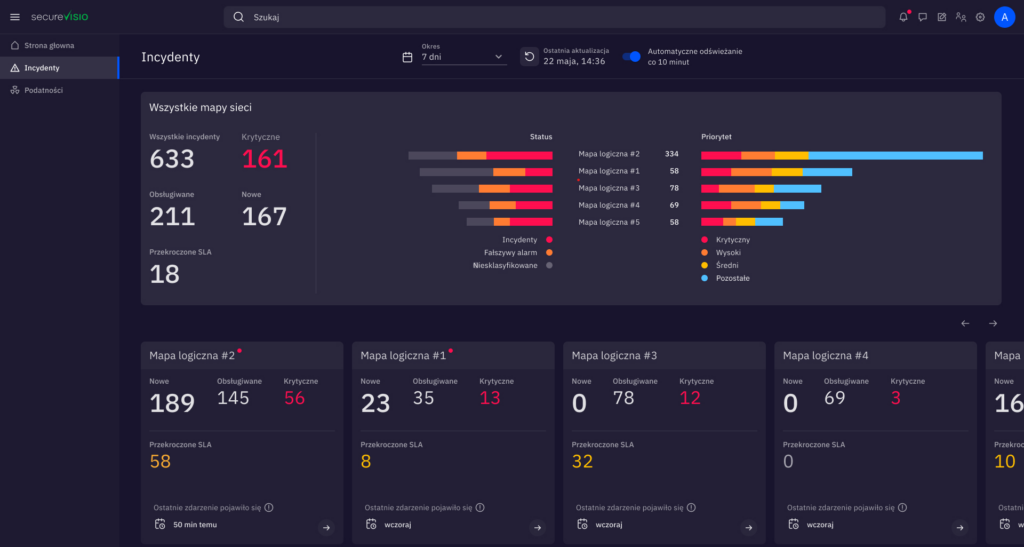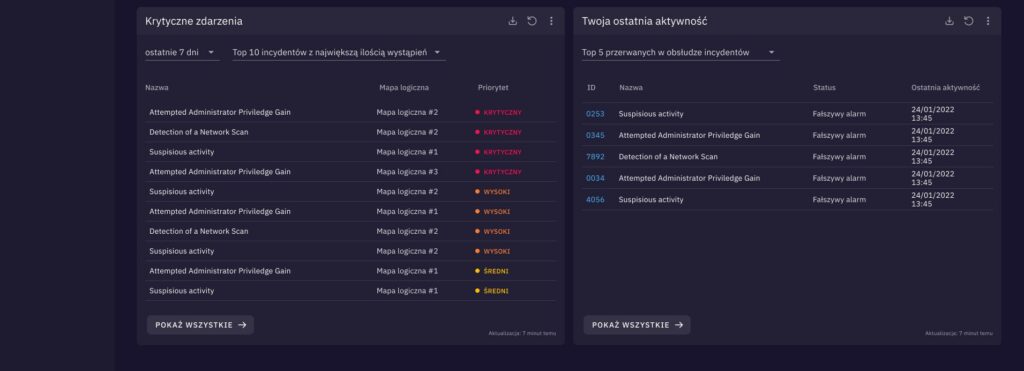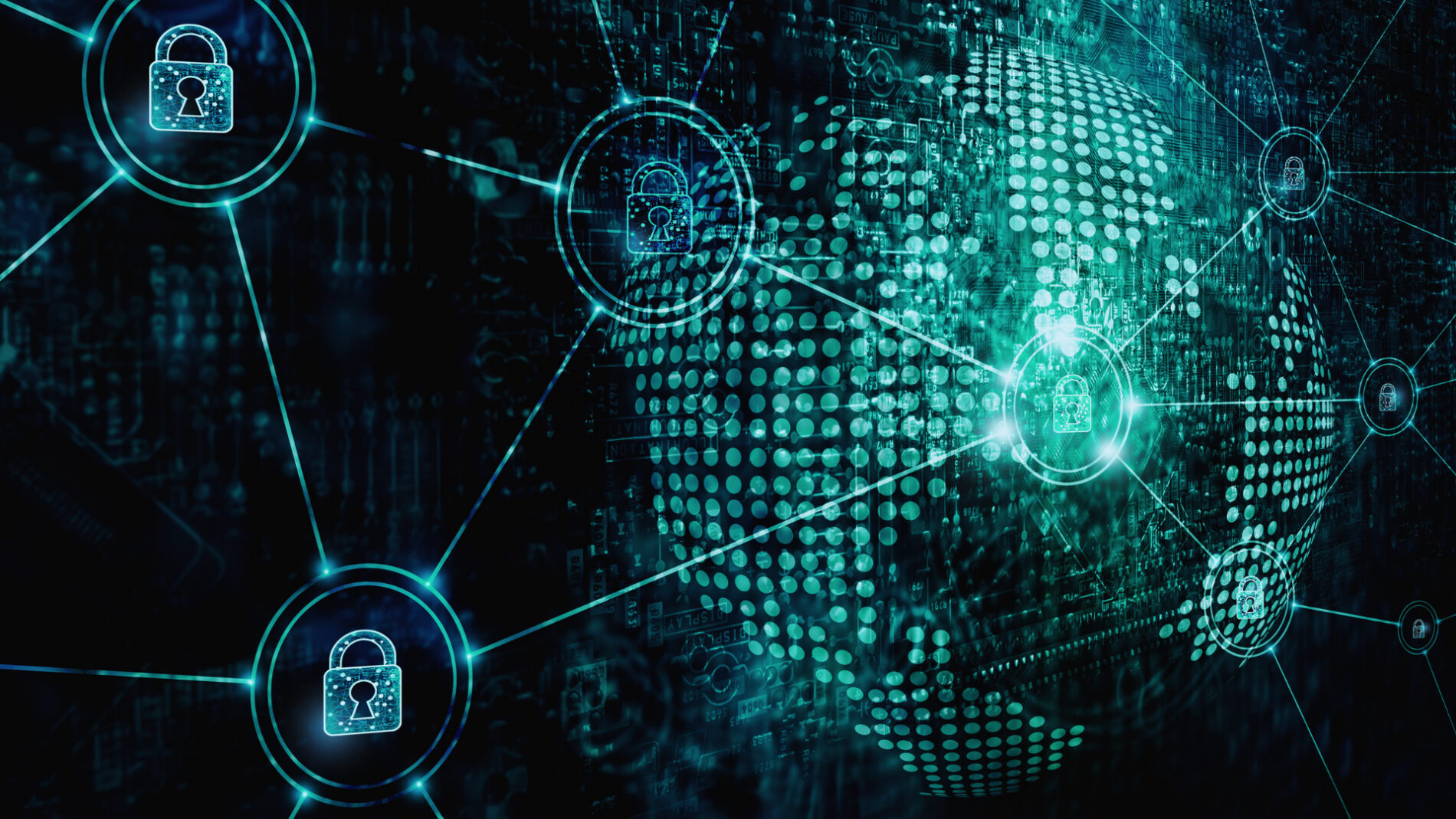Incident management operations are supported with dedicated Workflow, Playbook, Collaboration, Dashboard, and Reporting tools offering SOAR – Security Orchestration, Automation and Response – capabilities as well as compatibility with incident detection tools such as SIEM and UEBA. SecureVisio also has its own SIEM-based incident detection tools with Behavioral Analysis and Threat Intelligence.
What makes SecureVisio unique is real-time Business Impact Analysis conducted automatically for all detected incidents to prioritize security operations activities and identify issues requiring an immediate response.
IT security staff have all the tools and information they need for incident management in one graphical console:
- system description,
- current system vulnerabilities and other related events,
- business priority,
- incident environment,
- relevant attack vector risks,
- potential consequences of security breach,
- SLA tracking,
- Threat Intelligence information,
as well as Workflow and Playbook tools for collaboration and incident handling.

SecureVisio allows you to manage incidents just like in typical SIEM and SOAR solutions, prioritizing incidents based only on the technical severity of the events. Organizations have the option to introduce business process-based risk assessment and focus on those incidents that are the most important to the organization’s business. For managers, SecureVisio calculates business-relevant key performance and key risk indicators. These metrics allow you to predict new emerging threats to proactively improve security for your most valuable assets.
KPIs inform IT security staff about relevant events (number of incidents handled, time from detection to containment/eradication, etc). KRIs show risk trends that can help you better monitor potential future shifts in risk conditions as well as new emerging risks (e.g., monthly trends in incidents and vulnerabilities related to critical business processes or sensitive data). Thanks to business-relevant KPIs and KRIs, systems managers and decision makers can stay apprised of security risks, with early notification of situations requiring immediate decision and response. KPIs and KRIs are particularly useful for planning security improvements.


